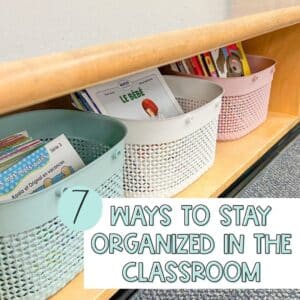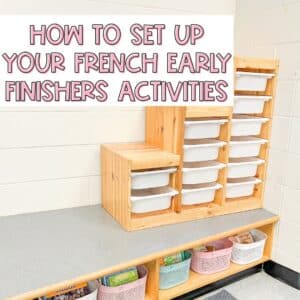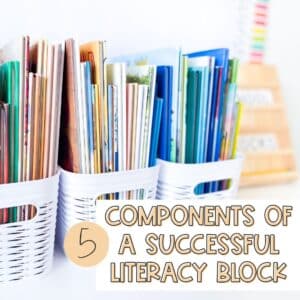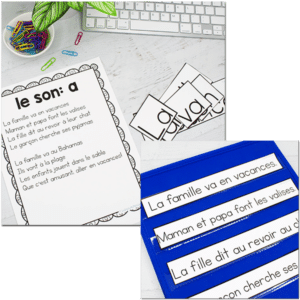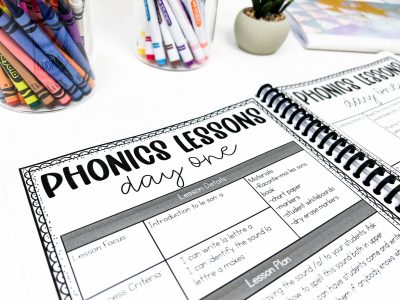When September comes around, I always start with the best intentions. I’m going to stay organized, develop a system, and stick to it. Yet, just a few weeks later – as you get into the thick of things – your once immaculate classroom organization goes awry. Stuff is everywhere!
Setting up your classroom and creating an organized system doesn’t have to be so difficult. With a few simple tips and systems, you can avoid mess and confusion. Here’s how to keep your classroom organized.
Classwork
Classroom organization can sometimes feel like herding cats! The chaos typically begins with the desks, which often turn into black holes for student materials. What can you do? I’ve adopted a strategic approach to ensure that classwork doesn’t end up lost, covered in ancient snacks, or inadvertently tossed out.
I use duo-tangs – a type of colourful folder – to keep the work together. You can have one colour per subject to keep things nice and organized. These duo-tangs each go in a separate bin based on the subject. This way none get lost in student desks!
For literacy, I have a bin for each student – you can grab some at Dollarama – which are numbered for each student. At the start of the year, the student is assigned a number relating to one bin, which becomes their “book bin” for the rest of the year. Students can put all their work, books, and reference documents into the bin.
For anything loose that doesn’t go in a duo-tang, I use finished and not finished bins. These can get messy quick, but they work well for larger projects that don’t fit anywhere else.
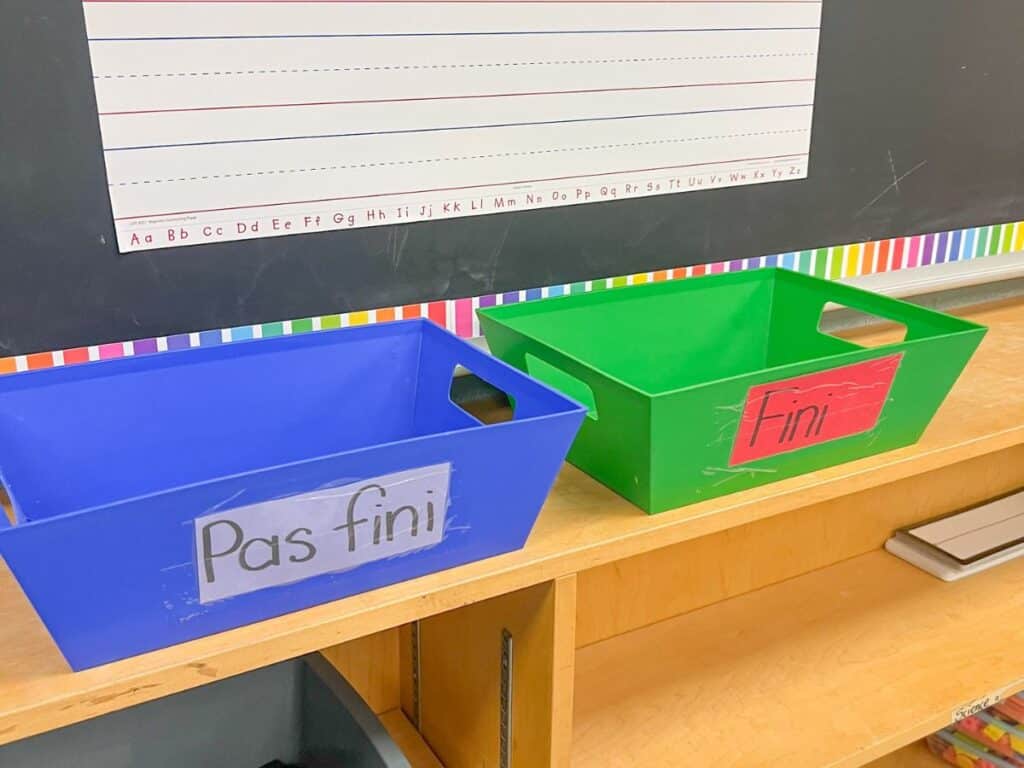
Friday Folders
The concept of Friday Folders has revolutionized the way I handle completed work in my classroom. Here’s how it works: every Friday, students receive a pocket folder brimming with the week’s accomplishments. The students take home the completed work, and it stays there. Parents can then empty the folder over the weekend and send back the empty folder on Monday.
For the rest of the week, the folders live in a bin on our shelves. Only when Friday rolls around do we pull them back out again and spend time handing out the completed work. Staying on top of the work prevents it becoming overwhelming. It’s all about how you set up your classroom.
Want a free note for parents about Friday Folders? Grab mine here!
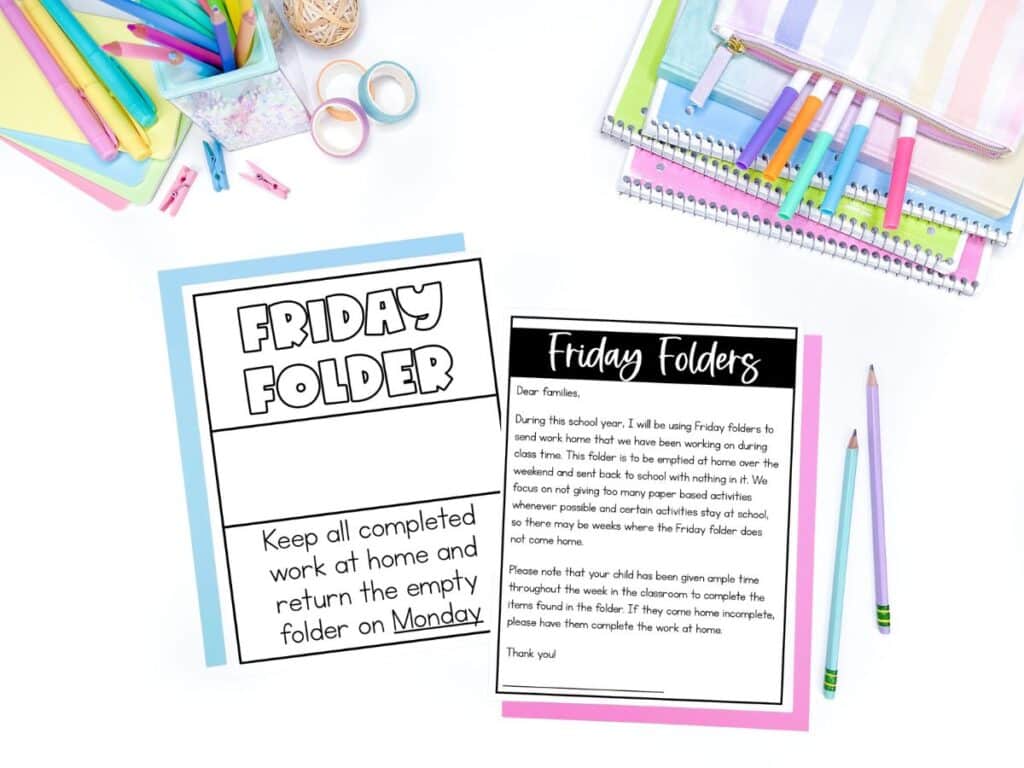
Assessment Duo-Tang
As far as classroom organization goes, managing student assessment requires a thoughtful system. It’s a balancing act: I like to keep assessments at school for easy reference (especially when writing report cards), but parents also want to see them regularly to monitor their child’s progress.
The solution? I use assessment duo-tangs to get the best of both worlds. The process is straightforward: assessments are placed in the duo-tang, sent home for parental review, and then returned to school with a signature.
The brilliance of this system is that it not only streamlines communication but also keeps assessment-related documents consolidated in one location. When it’s time to write report cards or discuss a student’s progress during parent-teacher meetings, I can easily access their entire assessment history. Nor are parents kept out of the loop only to be surprised with bad results come meeting time.
Grab my free assessment duo-tang letter & cover page.
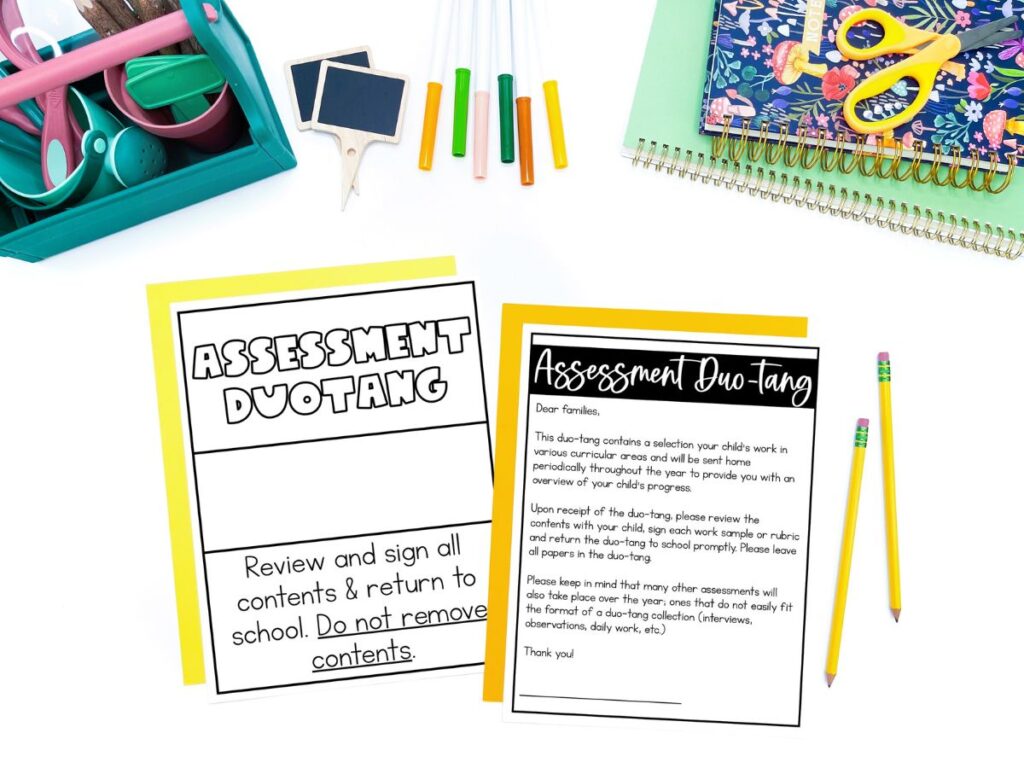
Books
Setting up a classroom is basically the same as launching a library. There are books – lots of books! And like any library, there are always those individuals who hand them back late or put them in the wrong locations.
Despite my efforts to instill good habits, students often struggle to return books to their correct locations after using them.
Since the students keep the books they’re reading in literacy bins – while they’re reading or learning from them – by the time they’re ready to put them back, they’ve forgotten where they’re supposed to go. Sound familiar? The answer isn’t that complicated – I refined my book organization strategy by categorizing books by genre or author and implemented a color-coded system using coloured dot stickers.
Then, to ensure students stick to the system, I added a sign on the front of each basket with that color so all students need to do is put the book in the matching basket when they’re done with them. Don’t overcomplicate things. The easier the system is to follow, the closer students follow it.
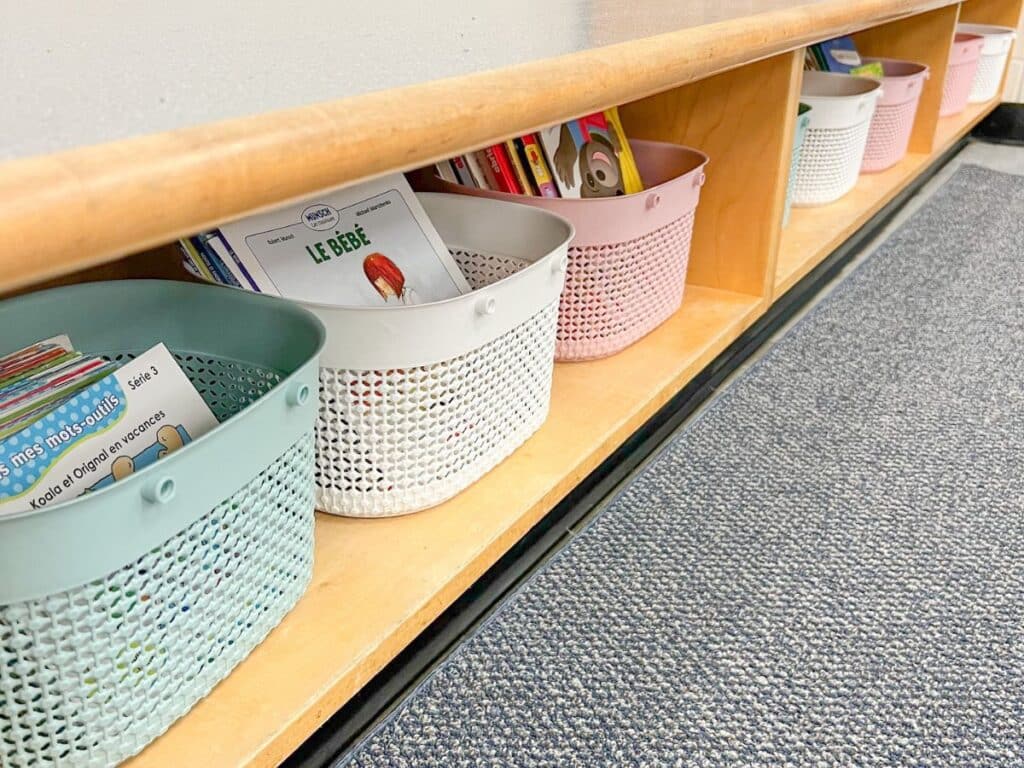
Read Alouds
My passion for read-aloud sessions (the best way to get children engaged with reading!) has led me to amass a vast collection of books over the years. Guilty as charged! Initially, a single, cumbersome bin housed the entire collection. But, as time went by, the task of classroom organization became more and more difficult. Even just moving that bin was challenging; it was insanely heavy.
So, I did the sensible thing and bought some more bins from Dollarama. I then set to work organizing the books by type: holidays, specific authors, themes, etc. For example, you could have these categories: character development, Robert Munsch, Christmas, seasons, diversity, and science.
Now, selecting the perfect book for a read-aloud session is as simple as picking the relevant bin and choosing from a smaller, more manageable collection. Bonus: I can always find what I’m looking for now! No more rummaging through a giant bin with 100+ books (and no – that isn’t an exaggeration).
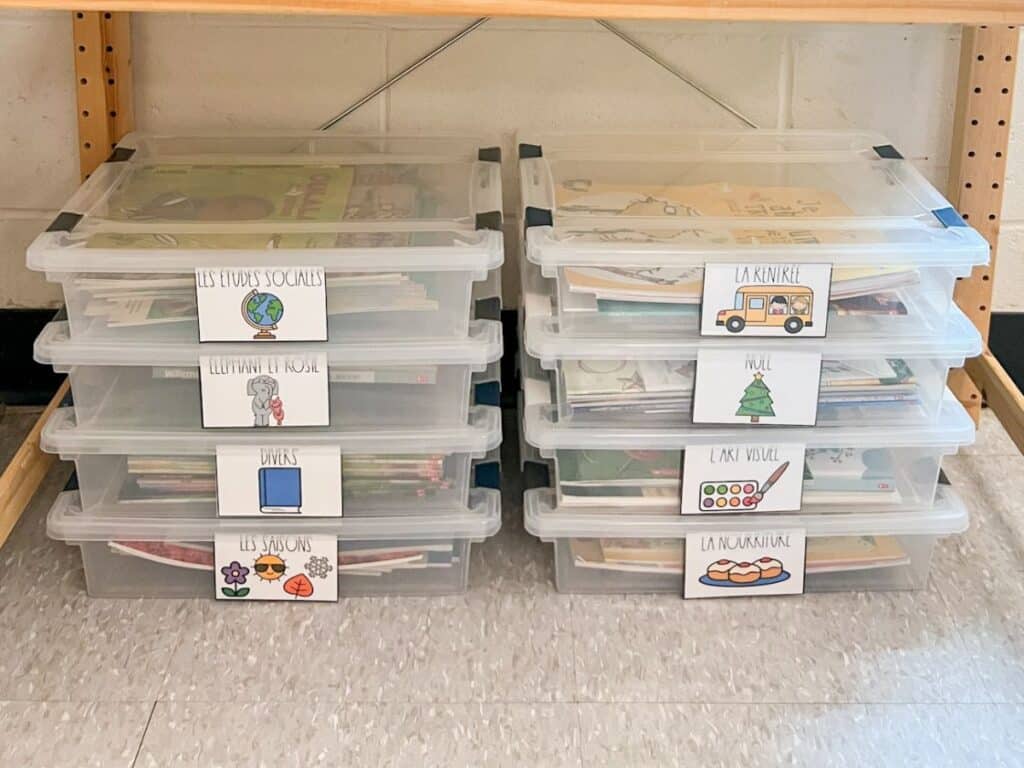
School Supplies
School supplies is a subject I’ve gone back and forth on. Setting up a classroom is a personal choice and depends on the personalities of the children. Sometimes, I’ve done communal-only bins; other times, I’ve switched back to no communal bins. After various iterations, I’ve settled on a hybrid system that accommodates individual preferences while ensuring everyone has access to necessary materials.
Each table in the classroom is assigned a colour, and a corresponding multi-compartment bin is placed on it, stocked with essential items like pencils, erasers, coloured pencils, glue, and scissors. However, some students will choose to keep their things completely separate – especially if they’ve got a pencil they really like. That’s absolutely fine! Others throw everything directly into the bin.
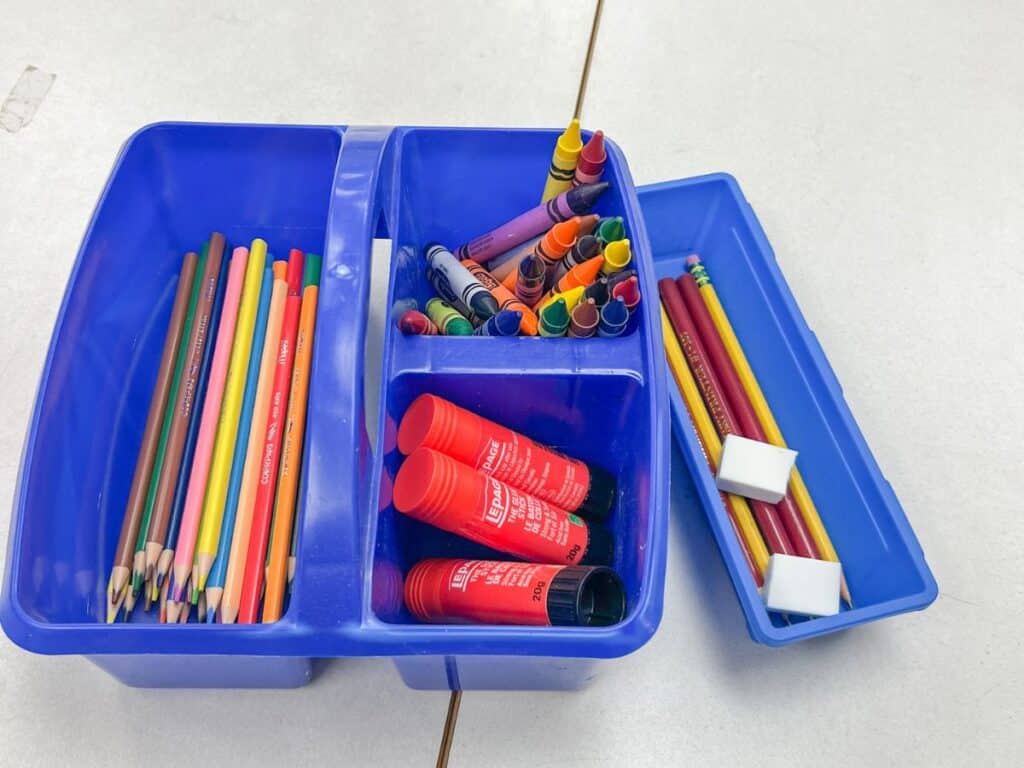
Zippies
Zippies, or message bags, are a game-changer in my classroom, ensuring essential communications and materials travel safely between school and home. These bags hold agendas, handouts, Friday folders, library books, and assessment duo-tangs, preventing items from getting lost or damaged.
When students arrive at school in the morning, they’ll go get their zippies and open up their agendas to see if there are any notes from parents. Post-review, the zippies are stored in labeled bins corresponding to each table group (I name my tables after colours). There’s a weekly rotating ‘zippie monitor’ in each group who is responsible for the distribution and collection of zippies, fostering a sense of responsibility and teamwork.
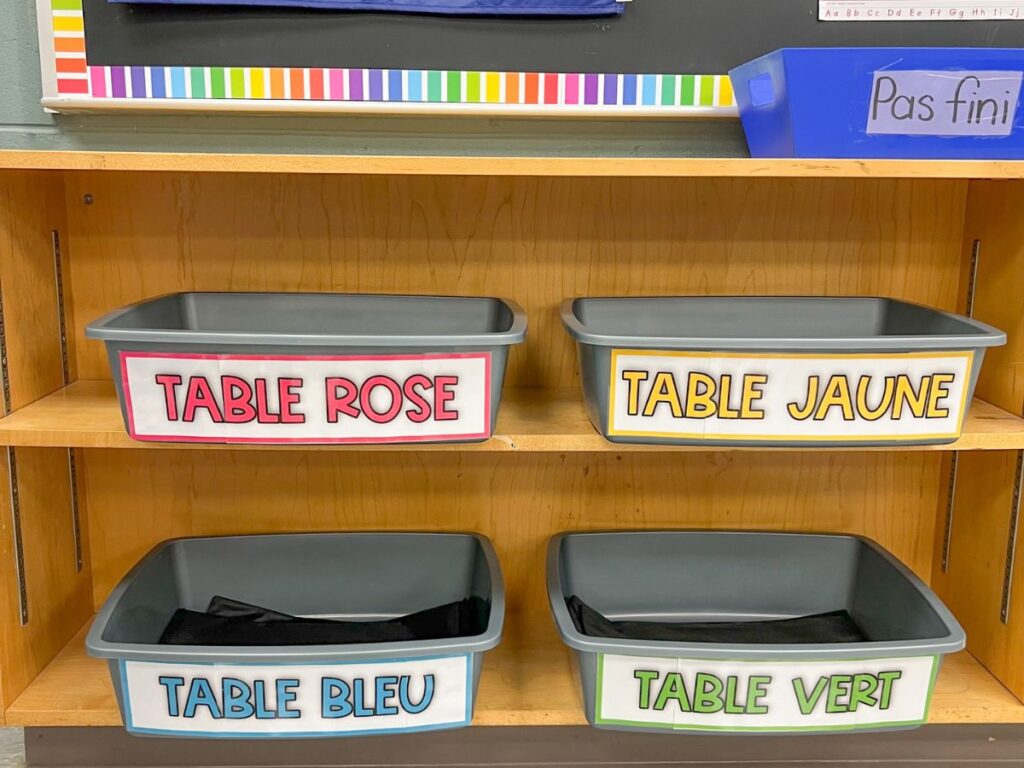
Want more tips on how to keep your classroom organized?
Learn about how to create a teacher toolbox, how to make privacy folders (for under $30), timetabling, and much more! I have lots of resources on my blog to help you feel back to school ready.


